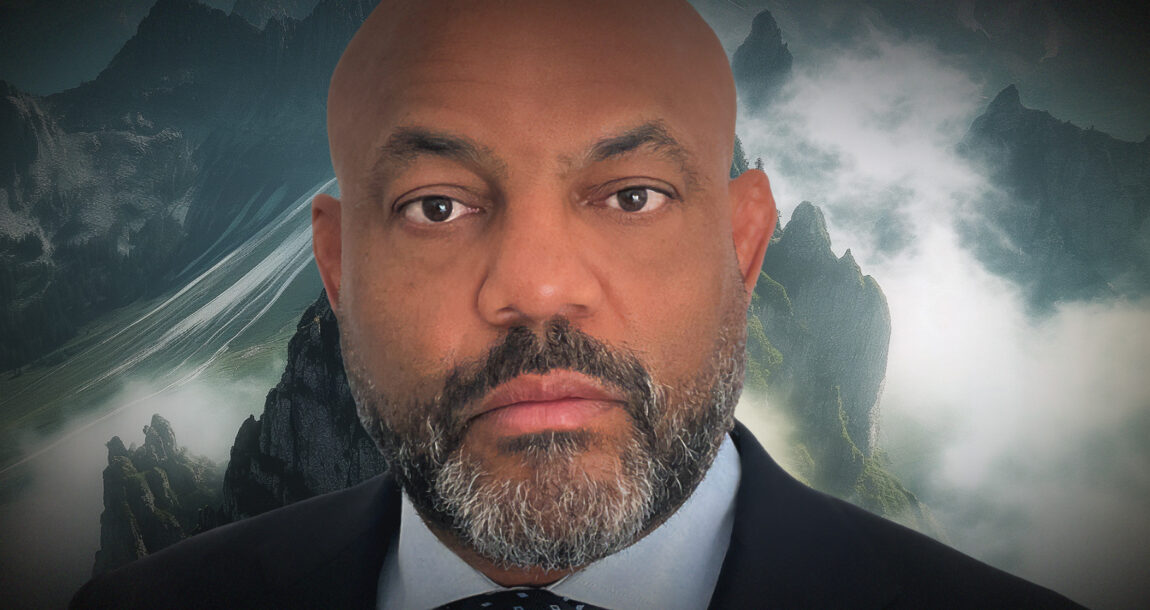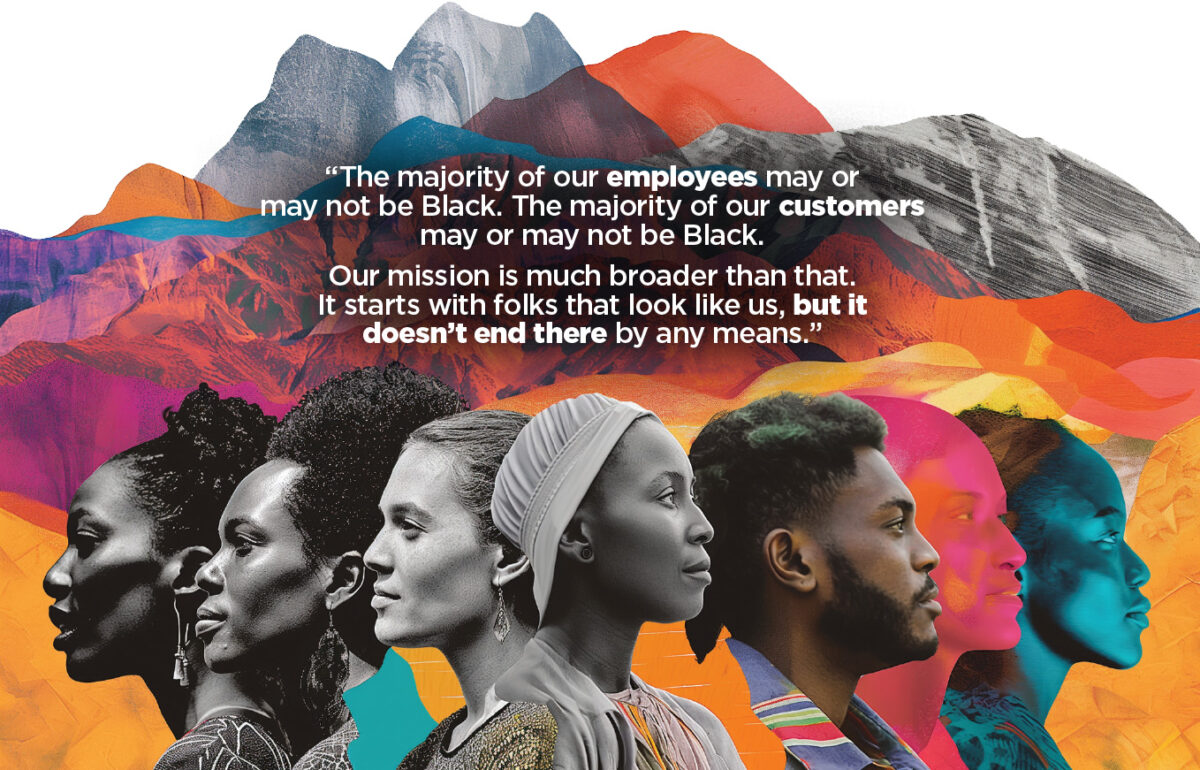Standing on the shoulders of giants — With Bryan Simms

In the 1900s, as countless African Americans found themselves barred from life insurance coverage, Black-owned carriers like Mammoth Life and Accident Insurance Co. emerged with a mission to help people of color get the insurance products they need.
Over a century later, the historical Mammoth name has been revived under the helm of Bryan Simms and Paul Ford, two men of color who saw the need for the original company’s vision to continue today.
Mammoth Life & Reinsurance Co. was founded in 2021, carrying the same mission as its namesake but now equipped with new technology, carried forward by its access to the largest network of agents of color in America and employing a strategy of targeted community outreach through trusted centers of influence.
“We’re not trying to become the newest brand on the market that can stand by itself,” Simms, MLRC president, said. “We realize we must stand on the shoulders of giants in order to achieve gigantic work.”
Unchanged historical bias
Discrimination through restrictive underwriting requirements has long barred African Americans and other people of color from accessing even basic life insurance in the United States.
Research from LIMRA indicates that as of 2023, more than 100 million Americans are still underinsured — the majority of whom are people of color.
The same challenge existed as early as the 1800s, leading to the first Black-owned insurance firms being created. Many others followed over the years.
It’s a history MLRC’s founders know well.
“There were about 38 to 50 of these Black-owned insurance companies that existed and came up, all with a similar origin story — faith-based institutions partnered with captains of industry who were former slaves,” Simms explained.
Such businesses flourished at first, but most dwindled by the 1990s. Today, there are only two Black-owned insurance companies still doing business in the U.S.
One of those businesses is Atlanta Life, the final remnant of the Black-owned businesses that were created in the peak years of the early 20th century.
The other is the new Mammoth Life, picking up the mantle of the original company.
“We did all the research in the world and found a historical society that owned the trademark for what was Mammoth Life and Accident Company, founded in 1915 by former slaves for the purpose of creating financial services products for communities of color,” Simms said.
The trademark owners were happy to let Simms and Ford use the Mammoth title. While MLRC’s name differs from the original company, it is “based on and inspired by that great historical brand.”
A personal passion
The challenges facing underserved communities of color in terms of insurance coverage and financial well-being are personal for MLRC’s founders. This is why Simms, whose background is in investment banking, is “wildly passionate” about the positive impact Mammoth can have.
Simms earned an undergraduate degree at Duke University and an MBA at the University of Virginia.
Upon graduating, he launched a 25-year career in Wall Street, working for companies such as J.P. Morgan and Lazard. He even had the opportunity to work directly for Vernon Jordan, an African American businessman and his personal “hero,” from whom he learned much.
But after amassing decades of experience and insight, Simms found he was more interested in how his work could make a meaningful difference.
“I left investment banking a little over 10 years ago because I knew I was built for something different,” he said. “Not necessarily as altruistic as the Mammoth mission, but just built for different.”
This led him to meet Ford, who had “developed the very first platform to use big data and data analytics tools like regression analysis to help traditional carriers better understand mortality and morbidity risk.
“This platform that we had, we could layer on top of any traditional carrier and help them understand the risk that they’re taking, which hopefully expands the box, the kind of risk they’ll take,” Simms noted.
Equipped with this innovative technology and a drive to create positive change, the two set out to create a “brand-new model for an insurance carrier.”
Years later, Mammoth Life was formed.
Technological solutions
Using old underwriting mechanics and technology with built-in biases is the primary downfall of the many long-established insurance providers that still struggle to tap into underserved markets, according to Simms.
“My partner and I have more than a decade of experience working with other carriers that tell us exactly what I’m stating,” he said. “It’s not that they don’t have intention — they just have a legacy infrastructure that moves like the Titanic.”
But Mammoth is different. They’ve expanded the data sets used in underwriting to make them more inclusive, using 5,000 instead of the five data sets that most traditional carriers use.
“You can imagine that what was black-and-white TV now went to 5K really quickly,” Simms said.
As a result, some traditional “knock-out classes of risk” are no longer automatically disqualified.
Simms used the example of diabetes, which predominantly affects Brown and Black Americans but automatically disqualifies many from standard life insurance products.
“That’s not the right way, from our perspective, to look at it, because if you have a diabetic who is taking medication, is sticking to protocols, has A1C levels in a healthy range, there’s no difference between their mortality risk and somebody who doesn’t have that diabetic concern.”
This is how Mammoth Life intends to overcome preexisting bias and help more Americans qualify for life insurance.
Community-based solutions
The company also seeks to tackle two major shortcomings Simms believes are driving the insurance racial gap: trust and education.
“We are aimed at helping carriers identify communities that have not been underwritten properly, to point to opportunities for them to underwrite better and then to address the trust gap and the education gap,” Simms said.
Their strategy includes partnering with faith-based organizations and employing the most agents of color in the U.S. They believe this will help build trust among underserved communities, which will also help to address the education gap.
“That trust gap can be conquered quickly because we have the ability, through data science and analytics, to match consumers with agents who can actually relate to them.”
For instance, the company currently partners with an organization representing 3,000 independent Black financial professionals in the United States. However, Simms emphasized that MLRC’s mission is not to help only African Americans.
“We are not insular,” he said. “The majority of our employees may or may not be Black. The majority of our customers may or may not be Black. Our mission is much broader than that. It starts with folks that look like us, but it doesn’t end there by any means.”
A commercial mission rooted in altruistic principles
Simms revealed his larger vision for MLRC: compressing the racial wealth and inequality gap in America.
To this end, they will reinvest in projects such as affordable housing, education, banking and infrastructure in marginalized communities. The company has also created a private equity vehicle solely focused on making seed investments in underrepresented founders, who often lack access to capital.
“We plan on using Mammoth as a vehicle to create a pot of money that will invest in underrepresented founders,” Simms said. “This is not a charity fund, but we will support entrepreneurs of color and women and promote minority entrepreneurship.”
This derivative mission is one that Simms has “a lot of passion for.”
“We have an opportunity to create a substantial business that has an incredible amount of cash flow in it that can be put to real good use in terms of compressing this wealth inequality gap,” he said.






A man on a mission — With Foresters Financial’s Matt Berman
IUL illustrations: That was then; this is now
Advisor News
- Athene Enhances Flagship Annuity Products, Expands Innovative Preset Allocation Feature
- Advisor gives students a lesson in financial reality
- NC Senate budget would set future tax cuts, cut state positions, raise teacher pay
- Americans believe they will need $1.26M to retire comfortably
- Digitize your estate plan for peace of mind
More Advisor NewsAnnuity News
- Athene Enhances Flagship Annuity Products, Expands Innovative Preset Allocation Feature
- GBU Life introduces Defined Benefit Annuity
- EXL named a Leader and a Star Performer in Everest Group's 2025 Life and Annuities Insurance BPS and TPA PEAK Matrix® Assessment
- Michal Wilson "Mike" Perrine
- Emerging digital annuity sales process cutting cycle times by 94%, IRI says
More Annuity NewsHealth/Employee Benefits News
- In defiant speech, Lawson-Remer calls for bigger county spending, unity against federal cuts
- Editorial | Why Medicaid funding crisis matters here
- Recent Findings in Liver Cancer Described by Researchers from Kaohsiung Chang Gung Memorial Hospital (Comparing Health Insurance-reimbursed Lenvatinib and Self-paid Atezolizumab Plus Bevacizumab In Patients With Unresectable Hepatocellular …): Oncology – Liver Cancer
- Missouri Farm Bureau wants to offer health insurance alternatives for members
- Don’t let Texas move Fort Worth-area kids off health plans their families prefer | Opinion
More Health/Employee Benefits NewsLife Insurance News
- AFBA and 5Star Life Insurance Company Name Erica L. Jenkins Senior Vice President, General Counsel, and Corporate Secretary
- Athene Enhances Flagship Annuity Products, Expands Innovative Preset Allocation Feature
- Empathy Collaboration with Voya Financial Brings Industry-First Legacy Planning to Millions
- Federated celebrates record year despite industry challenges at 121st annual meeting
- Proxy Statement (Form DEF 14A)
More Life Insurance News